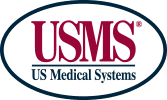Regulatory bodies define what the word refurbished means when it comes to used medical equipment. Generally speaking, it means that the device is as safe and effective after the refurbishing process as a new piece of equipment. Here’s an inside look at refurbished medical equipment from US Medical Systems.
What’s Involved in the Refurbishing Process?
The refurbishment process usually involves several steps including reconditioning, repair, rework, replacement of worn parts, and software/hardware updates. However, it should not alter the device’s intended use or its safety and performance, nor should it lead to a new regulatory approval or recertification process. Refurbished medical equipment for sale is available either from OEMs or third-party organizations like USMS.
How Common Are Refurbished Devices?
Refurbished devices are quite common. Diagnostic imaging devices account for the largest part of the refurbished equipment market. You probably wouldn’t be able to tell it apart from a new device by its exterior alone. During refurbishing, the device will have been disassembled, disinfected, and cleaned; its surfaces and panels repainted or restored with new stickers and labels; and knobs, controls, monitors, and indicators will have undergone at least some cosmetic repairs.
But let’s take a quick look inside. The unit is expected to be restored to the original or current specifications. All parts should have been checked for wear and damage and replaced as needed. Typically, OEM or approved suppliers’ parts will be used in the process but these are not always available. Some third-party refurbishers may be hesitant to replace certain electronic components like boards or transducers if they do not have easy access to original parts since this may affect the safety and performance of the device. Ideally the checking and replacement procedure should apply to all hardware. Next comes the software update. In most cases, the latest software revision can be found and updated if necessary.
Some of the most critical parts of the process cannot be seen with the naked eye. These include calibration and a thorough testing of the equipment for functionality and safety. If all steps are followed carefully, the end result is a device that looks and functions like new. The extent of refurbishing depends on the initial condition of the unit. This includes an assessment based on its history. Some service companies may also differentiate refurbishment levels depending on the customer’s budget and needs.
USMS offers different types of refurbished medical equipment for sale. Contact us to learn more about our programs.

